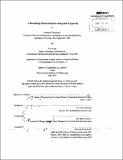| dc.contributor.advisor | Jarrod Goentzel and Jason Acimovic. | en_US |
| dc.contributor.author | Nishimura, Kathryn K. (Kathryn Kimie) | en_US |
| dc.contributor.author | Wang, Jian | en_US |
| dc.contributor.other | Massachusetts Institute of Technology. Engineering Systems Division. | en_US |
| dc.date.accessioned | 2013-09-24T19:42:58Z | |
| dc.date.available | 2013-09-24T19:42:58Z | |
| dc.date.copyright | 2013 | en_US |
| dc.date.issued | 2013 | en_US |
| dc.identifier.uri | http://hdl.handle.net/1721.1/81102 | |
| dc.description | Thesis (M. Eng. in Logistics)--Massachusetts Institute of Technology, Engineering Systems Division, 2013. | en_US |
| dc.description | Cataloged from PDF version of thesis. | en_US |
| dc.description | Includes bibliographical references (p. 63-65). | en_US |
| dc.description.abstract | Since the year 2000, at least 300 disasters occurred annually, catching more than 100 million people unprepared and in need of international assistance every year. The United Nations operates five humanitarian response depots (UNHRDs), stocked with over 1,000 types of humanitarian relief items. In the event of an emergency, the UNHRDs deploy the pre-positioned stocks to meet the initial demand of those people affected. Our thesis evaluates the response capacity of the UNHRDs to a single potential disaster: what percentage of total affected people can be served and in what time period. Developed from a stochastic linear programming model, this two-part index assumes that the depots operate as a network, lead times are proportional to distances from depots, and stockpiles are optimized individually for each relief item. Given a specific level of initial inventory for each item, the model also provides insight into how to distribute relief items throughout the five depots to minimize the expected delivery time. Based on a marginal benefit analysis, each unit of inventory is allocated to a depot to minimize the total expected delivery times to disasters. We describe how the UNHRDs and other humanitarian relief organizations can strategically pre-position limited emergency relief resources to maximize their capacity to respond to disasters. | en_US |
| dc.description.statementofresponsibility | by Kathryn K. Nishimura and Jian Wang. | en_US |
| dc.format.extent | 74 p. | en_US |
| dc.language.iso | eng | en_US |
| dc.publisher | Massachusetts Institute of Technology | en_US |
| dc.rights | M.I.T. theses are protected by
copyright. They may be viewed from this source for any purpose, but
reproduction or distribution in any format is prohibited without written
permission. See provided URL for inquiries about permission. | en_US |
| dc.rights.uri | http://dspace.mit.edu/handle/1721.1/7582 | en_US |
| dc.subject | Engineering Systems Division. | en_US |
| dc.title | Calculating humanitarian response capacity | en_US |
| dc.type | Thesis | en_US |
| dc.description.degree | M.Eng.in Logistics | en_US |
| dc.contributor.department | Massachusetts Institute of Technology. Engineering Systems Division | |
| dc.identifier.oclc | 858278023 | en_US |
